The American Rescue Plan Could Increase Employers’ Risk of ACA Non-Compliance
Provisions of the new Federal law can increase complexity and place employers at greater risk. Are you ready for it? Read on …
The American Rescue Plan results in some big changes to the Affordable Care Act (ACA). The new $1.9 trillion stimulus package supports healthcare affordability and increases marketplace access for millions of Americans by expanding consumer eligibility for premium tax credits to pay for health insurance premiums.
The Plan though, presents new hoops for employers to jump through – and not all of them are positive. That’s because the new law contains provisions that can increase complexity and place employers at greater risk of incurring IRS penalties for ACA non-compliance.
The Plan expands eligibility by eliminating the 400% FPL income cap for tax years 2021 and 2022. That means more Americans will qualify for subsidies, resulting in greater risk to employers in failing to offer affordable coverage (and potentially more work in responding to IRS requests).
When your full-time employee receives a marketplace subsidy, the IRS sends the employer a 226-J Letter with a notice of proposed Penalty B fines for each employee identified. For employers that do not meet the offer requirements, this could result in hundreds of thousands of dollars in fines. Even for compliant employers, responding to a 226-J Letter can be timely and costly.
Plus, the pandemic-induced reduction of workforce hours already presents increased risk of employers’ plans being classified as unaffordable. Coverage for employees whose work hours and income have been reduced may no longer be considered affordable under the ACA. Affected employee(s) buying insurance through an exchange could set up a scenario in which the employer incurs an IRS 226-J penalty notice.
“Affordability” is calculated differently on the exchanges than it is at the employer level.
Employers, following the rules set out for them under the ACA, can leverage safe harbors – the FPL, rate of pay or W2 calculations – to determine whether the coverage they offer each full-time employee is affordable. If “affordability safe harbors” is a new term for you, here’s how the IRS explains it:
“Employer-provided coverage is considered affordable for an employee if the employee-required contribution is no more than 9.78 percent (as adjusted) of that employee’s household income. In general, the employee required contribution is the employee’s cost of enrolling in the least expensive coverage offered by the employer that provides minimum value. The employee-required contribution includes amounts paid through salary reduction or otherwise and takes into account the effects of employer arrangements such as health reimbursement arrangements (HRAs), wellness incentives, flex credits, and opt-out payments.”
Employers may use a safe harbor to ensure the employee-required contribution is no more than the affordability threshold for a given year. You can even choose different safe harbors for different employee populations, in accordance with ACA guidelines.
Safe harbors were established because the ACA determines affordability based on a taxpayer’s total household income – information that employers frequently don’t have access to. Exchanges, on the other hand, determine affordability on household size and household income – data they collect directly from the individuals who are applying for coverage.
What all this means is that there may be a larger subsidy-eligible population than an employer realizes within their workforce, especially for single earner households with larger families.
With subsidies now available to a broader population, coupled with the pandemic-induced workforce impact, employers must be even more diligent in their ACA data collection and recordkeeping in case they need to defend themselves against Penalty B charges from the IRS if the premium on their lowest cost plan offering exceeds affordability requirements.
There are steps employers can take to avoid triggering a 226-J notice:
- Validate your data by looking for anomalies Inconsistent data reflecting hire dates, offers of coverage, leaves of absence and disability classifications can all pose potential problems. Solidify your data and ensure accuracy.
- Review and confirm the affordability of your safe harbor Consider the affordability of premiums for your lowest-paid employees, not just your average employee.
- Determine if your plans meet the FPL safe harbor. If not, consider whether the Rate of Pay or W-2 safe harbor is a better fit. Work with your ACA technology solution to model affordability determinations.
- Make the most of your eligibility determination solution Use your ACA technology solution to validate your total number of employees, their full-time status through monthly or look-back measurement, and your Form 1095-C code determination combinations, and potential fail codes and fail code combinations.
- Closely examine your anticipated future premium costs Make sure you are making affordable offers to eligible employees and fully understand your risk profile. Remember that even your lowest premium plan might not be considered affordable under the ACA for employees whose work hours and income were reduced (because of the pandemic or for other reasons).
- Promptly respond to any 226-J Letter you receive. Whether an employer agrees or disagrees with a penalty assessment, they should contact their ACA reporting solution provider, or whoever assisted in generating their forms, immediately for assistance.
Other impacts of the American Rescue Plan for employers and ACA compliance The American Rescue Plan Act also provides for fully subsidized COBRA premiums from April 1 to September 30, 2021. During this five-month time frame, the Act reduces an employee’s COBRA premium to zero in anticipation of a tax credit and reduces an employer’s ACA Penalty B risk.
Amid the pandemic and associated economic implications, it’s been common for employers to reduce an employee’s hours to contain costs. Because the employee is now earning less income, the employer’s offer of a COBRA plan is too expensive for the employee. Instead, the employee purchases coverage on the exchange, where they receive a subsidy. The subsidy then triggers a 226-J Letter to the employer. Under the ACA, the employer-offered COBRA coverage is deemed unaffordable to the employee. The employer is assessed a fine.
Now, under the American Rescue Plan Act, because the employee’s cost for COBRA is zero, the COBRA coverage offer is considered affordable, and the employer is not at risk for Penalty B.
A final word: Staying up to date on ACA employer responsibilities can be challenging. If you’re puzzling over how to avoid inadvertent non-compliance and associated financial penalties, let’s begin a conversation. Send me an email at bknerr@vanbeurden.com — I look forward to hearing from you and developing new solutions for the future.
Material in this blog was published by BenefitsPro.com

